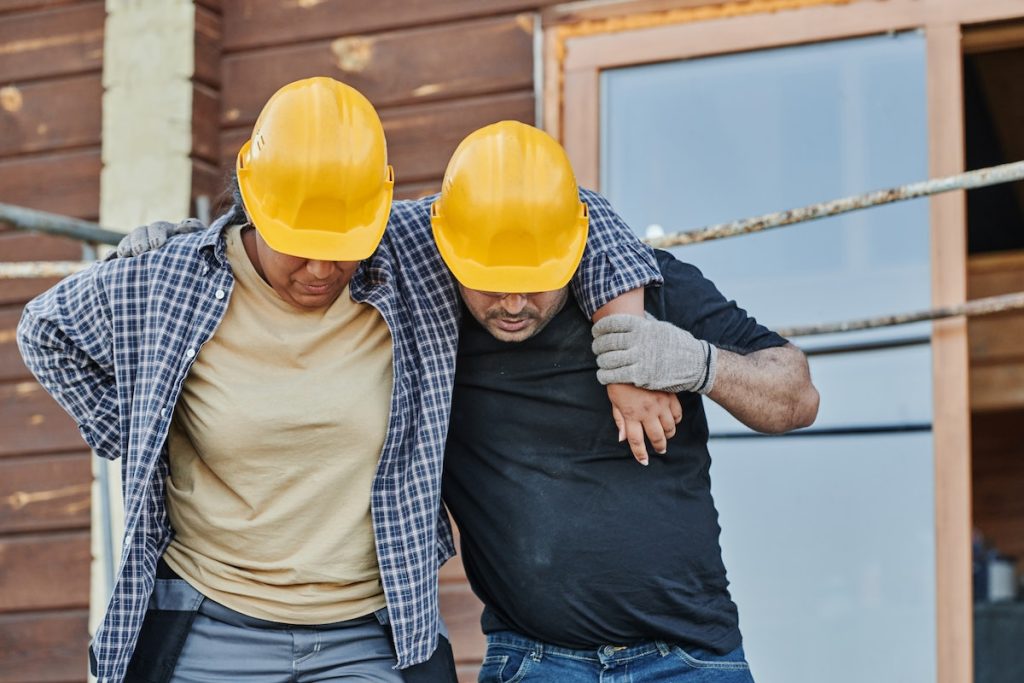It’s no secret that construction sites are some of the most dangerous work environments. According to statistics from OSHA, thousands of construction workers are injured on the job every year due to various accidents. Let’s take a closer look at some of the most common causes of workplace injuries in construction:
Causes of Injuries on Construction Sites
There are many potential hazards on construction sites that can lead to injuries. Some of the most common include:
Faulty equipment
Most construction sites use machines and tools to make their jobs easier. Unfortunately, some devices can malfunction or be misused and cause serious injuries. Inspect your equipment before use and follow the manufacturer’s instructions for safe operation.
Some machines can also cause injuries because of poor manufacturing or design. If this is the case, the worker can file a case against the manufacturer with the help of an expert’s opinion. They can help determine if the product is faulty, and if so, they can help you seek compensation. They can also help prove the importance of proper product development, which the manufacturer failed to follow.
Falls from heights
This is one of the leading causes of death and serious injury in construction. In fact, falls are responsible for a substantial number of fatalities each year. Several factors contribute to the risk of falling, including working at heights, using ladders, and working around openings in floors and walls. Fortunately, there are several ways to help prevent falls. First, always using fall protection equipment when working at heights is essential.
Second, workers should be trained to use ladders and other devices that may be used to access high places. Finally, employers should provide regular safety inspections of work areas to identify potential hazards. By taking these precautions, construction workers can help reduce the risk of falling and becoming injured on the job.
Being struck by an object
Construction workers are often hit by flying debris or falling objects. This can happen when workers are hit by falling debris or tools or struck by moving equipment. In some cases, these injuries can be minor, but they can also be severe or fatal. To help prevent being struck by an object, workers should always be aware of their surroundings and stay clear of areas where there is potential for falling debris.
They should also wear appropriate safety gear, such as hard hats and safety glasses, to protect themselves from hazards. By taking these precautions, workers can help to reduce the risk of being struck by an object and injured on a construction site.
Being caught in or between objects
Construction workers can get caught between two heavy objects or pinned beneath a severe thing that has fallen on them. It can occur when workers are caught between an object and a moving vehicle or when they become trapped while working with heavy machinery. In some cases, workers may be buried alive when a trench collapses, or a wall collapses.
To prevent this type of accident, you must be aware of your surroundings and clear of any potential hazards. If you are working with heavy machinery, always wear proper safety gear and follow the manufacturer’s instructions. Be sure to keep an eye out for any loose bricks or other debris that could fall and injure you. And always be sure to follow any posted safety signs and protocols.
Electrical accidents

Construction sites often involve working with electricity, which presents a severe hazard if you’re not careful. Always follow proper safety procedures when working with electrical equipment and wires to avoid being electrocuted. And stay clear of wet areas where there might be live electrical wires present; water conducts electricity, and you could be seriously injured if you come into contact with a live wire while standing in water.
Line workers face additional dangers when working with electricity because they work directly with high-voltage power lines. Linemen must always maintain a safe distance from power lines, typically at least 10 feet away from energized lines and 20 feet away from de-energized lines. They must also wear gloves, sleeves, pants, shoes, and other clothing made from electrically nonconductive materials to protect themselves if they come into contact with an energized line.
The bottom line
These are just a few of the most common risks construction workers face daily on the job. However, it is essential to remember there are several other hazards present on any construction site. To stay safe, it is essential for workers and employers to be aware of all potential risks and take the necessary steps to minimize them. By following safety protocols and wearing appropriate personal protective equipment, construction workers can help keep themselves and their coworkers safe on the job.
